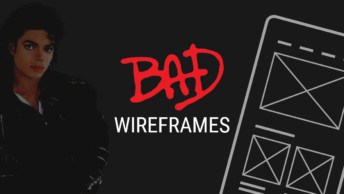As more and more companies realise the value of UX research, “guerrilla” methods have become a popular way to squeeze research into limited budgets and short timelines. Those of us working in agile sprints often have even less dedicated time for research.
When I say guerrilla research, I don’t mean go bananas or conduct jungle warfare research. Guerrilla research is really just a way to say that you’ve taken a regular UX research method and altered it to reduce time and cost.
To do so, you often end up reducing scope and/or rigour. The key to successful guerrilla research is to strike the right balance to hit time and budget goals, but still be rigorous enough to gather valuable feedback.
Read on for a framework for reducing any research method and an overview of the best time to use guerrilla tactics.
If you’re looking for practical advice on using guerilla research methods, take a look at my second article: Getting Started with Popular Guerrilla UX Research Methods
Crafting your guerilla plan
You can “guerrilla-ise” any UX research method, and there’s almost never one single correct way to do so. That said, qualitative techniques like usability tests and interviews lend themselves especially well to guerrilla-isation.
The easiest way I’ve found to plan guerrilla research is to start by determining how you’d do the research if you had desired time and budget. Then work backwards to find the elements you can toggle to make it work for the situation. The first place I look to cut is scope of the research question.
Let’s say your team is working on a new healthcare application and wants to assess the usability of the entire onboarding process. That’s an excellent goal, but pretty broad. Perhaps you could focus your study just on the first few steps of the signup process, but not the follow-up tutorial, or vice versa.
Once you’ve narrowed down your key research goals, you can start looking at what sorts of methods will answer your questions. The process for choosing a research method is the same, regardless of whether you’re trying to go guerrilla or not. For a great summary of choosing a method, take a look at Christian Rohrer’s excellent summary on NNG’s blog or this UX planet article.
Besides narrowing the scope of your research goal, think about the details that make up a study. This includes questions such as:
- What do you need to build or demonstrate?
- How many sessions or participants do you need?
- How will you recruit them?
- What’s the context of the studies?
Then you can take a look at all those elements, identify where your biggest time and money costs are, and prioritise elements to shift.
Reducing scope
Let’s say, for example, that you determine the ideal way to test the onboarding flow of your new app is to conduct 10 one-hour usability sessions of the fully functional prototype. The tests will take place in a lab and you’ll have a participant-recruitment firm find participants that represent your main persona.
There are many ways you could shift to reduce time and costs in this example.
You could:
- Run test sessions remotely instead of in a lab
- Reduce the number of sessions overall
- Run unmoderated studies
- Build a simpler wireframe or paper prototype
- Recruit participants on social media
- Intercept people in a public location
- Or a combination of these methods
To decide what to alter, look at what will have the biggest impact on time, budget, and validity of your results.
For example, if working with a recruiting firm will be time consuming and expensive, you’ll want to look for alternative ways to recruit. Intercepting people in public is what many of us envision when we think of guerrilla research. You could do that, or you could also find participants on social media or live-intercept them from a site or web app.
You may even decide to combine multiple guerilla-ising techniques, such as conducting fewer sessions and doing so remotely, or showing a simple prototype to people who you intercept.
Just remember, you don’t want to reduce time and effort so much that you bias your results. For instance, if you’re doing shorter sessions or recruiting informally, you may want to keep the same overall number of sessions so you have a reasonable sample size.
Best uses for guerrilla research
So, when is the best scenario to use guerrilla tactics in your research?
- You have a general consumer-facing product which requires no previous experience or specialty knowledge OR you can easily recruit your target participants
- You want to gather general first-impressions and see if people understand your product’s value
- You want to see if people can perform very specific tasks without prior knowledge
- You can get some value out of the sessions and the alternative is no research at all
And when should you avoid guerrilla methods?
- When you’ll be researching sensitive topics such as health, money, sex, or relationships
- When you need participants to have very specific domain knowledge
- When the context in which someone will use your product will greatly impact their usage and you can’t talk to people in context
- When you have the time or budget to do more rigorous research!
Guerrilla research is a great way to fit investigation into any timeframe or budget. One of its real beauties is that you can conduct multiple, iterative rounds of research to ensure you’re building the right things and doing so well.
If you have the luxury of conducting more rigorous research, take advantage, but know that guerrilla research is always a better option than no research at all.
Read the next article on getting started with common guerrilla techniques.





